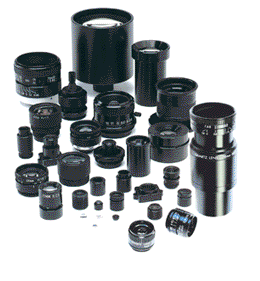High resolution lenses for machine vision — standard and custom lens design
Various Digital Microscopes Lenses
High Resolution Lenses for machine vision, instrumentation, inspection and vibration-sensitive applications. Standard and custom hi-res lens assemblies.

Microscopes Lenses
Microscopes have been moving into the digital age similar to other technologies in the medical and research fields. In addition to single lens microscopes, many researchers are utilizing trinocular microscopes; these are devices that use three eyepieces. Microscopes are either monocular (single lens) binocular (double lens) or trinocular. The trinocular models are associated with powerful research uses.
Trinocular style microscopes look at specimens in various ways, either through the use of optics, in which visible light is used to look at them; acoustic, in which sound is used to view specimens; and electron styles. The electron trinoluar microscopes use a particle beam of electrons to illuminate the specimens under observation. While trinocular microscopes utilize a three-eyepiece system they are multi-faceted in the ways in which they can illuminate and view specimens.
The third eyepiece in a trinocular microscope is a useful device when you’re inviting a second researcher to view the specimen. While this may not always be the ideal situation, this technology is perfect in a classroom or other teaching situation when the lead researcher or professor invites a student to view the specimen at the same time and it allows him to point out, in real time, what they’re seeing under the microscope. The third eyepiece also allows flexibility for the second viewer to focus the eyepiece to his or her own needs without impacting the other viewer.
In addition to allowing two individuals to view a specimen simultaneously, with the third eyepiece, researchers are able to fit a camera to the third eyepiece. With this camera apparatus, the specimen can be captured, recorded or projected onto a computer monitor for viewing by more individuals in the research setting.
The third eyepiece on the trinocular microscope has provided researchers and scientists with even more possibilities as it relates to specimen examination and the ability to share the views with more than one person at a time.